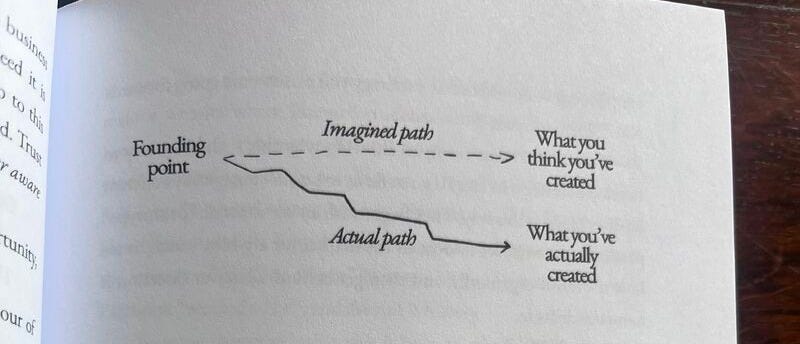Failing forward and learning from dragons
Turning bad rolls into forward motion
Over the past few weeks, I've been dealing with a painful dental issue. This has meant a lot of time lying around, eating ice cream, and because I’m a huge nerd, watching a lot of Dungeons & Dragons (especially Dimension 20 on Dropout).
D&D is a wonderful mix of storytelling and luck, with players making dice rolls to determine the direction of a scene – low rolls are “bad” (character fails whatever they were trying), high rolls are “good” (character succeeds).
With this in mind, I heard gamemaster Brennan Lee Mulligan talk about the concept of failing forward. While beginners may take multiple low rolls as repeated failure, he argues this isn't really true. When something goes wrong – a bad roll – the story doesn't stop, it just takes a new turn. The “failure” becomes the setup for the next interesting thing.
It's creative judo: using the momentum of what went “wrong” to propel you somewhere new, and probably somewhere more interesting. It’s a feature, not a bug.
It reminded me of something else I heard recently: “Good things take time, bad things just happen.” Accepting that is super freeing. This week was a frustrating string of low rolls - random health issues, stalled projects, nothing moving. But the bad rolls will always show up. All you can do is keep rolling.
Another common improv technique is “yes, and” – moving with the story and adding something to it no matter how crazy it gets. Failing forward is the flip-side of this: “no, but.” You hit an (often unavoidable) no, and – if you’ll excuse my phrasing – you find the but.
So that’s what I'm trying to carry into my own projects. Not every roll has to succeed, it just has to create momentum, even if that doesn’t look the same every week. You may even be surprised where the ‘bad’ roll takes you.
🎤 On the pod
This week’s episode is with Elena Mostovova, who writes the wonderful newsletter Art for Breakfast. I know almost nothing about art, which is exactly why I wanted to talk to her. Honestly, the whole art scene feels intimidating to me, but Elena has this gift for making art feel accessible and human. She connects paintings and sculptures to real life stuff like career changes, existential questions, and everyday challenges.
We dig into why she started writing about art, how it evolved from a personal journal into something more, and how someone like me can actually start connecting with art without needing a PhD in art history. We also explore how art can be a shortcut to understanding culture (whether you’re in your own city or traveling somewhere new), as well as the mysterious worlds of curating, collecting, and art investing.
Listen on Spotify, Apple, or wherever you get your podcasts.
💎 Worth your time
Aparna Chennapragada argues that most work is translation turning one form of information into another, and shows how AI could reshape organisations by making this process instant and nearly free.
On the topic of AI, “Just how bad would an AI bubble be?” explores what happens when (or if) the current AI hype deflates.
I love this graphic from No Bullsh*t Strategy, discovered through LinkedIn (and I feel like I see a lot more “photos of books” as a marketing strategy these days). Feels relevant to today’s topic as well as to basically any creative project.



